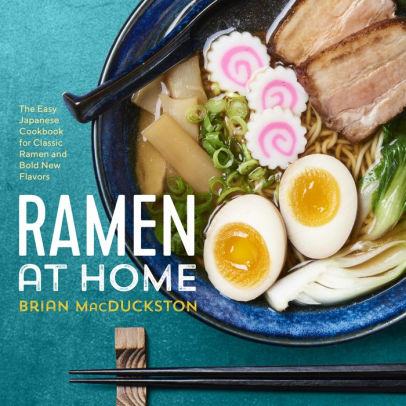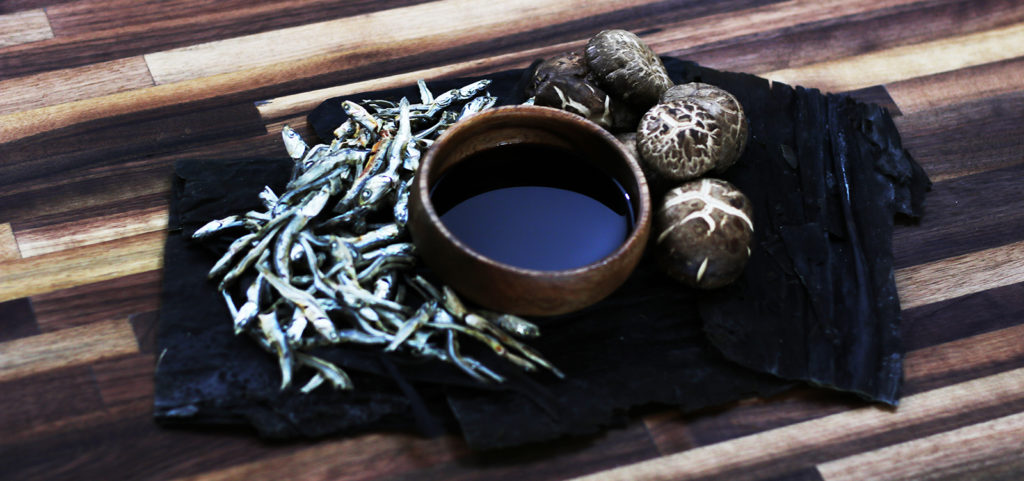
Here is a question for you. Can you put 1¾ cups of water into a sauce pan, cook it for about 15 minutes, add stuff to it, strain that stuff out and get 2 cups of finished product? According to the recipe for Shoyu Tare in Brian MacDuckston’s book Ramen at Home, you sure can! In the words of the infamous Cousin Vinny “Perhaps the laws of physics cease to exist on your stove!”
Obviously, it’s a mistake, and unfortunately this book is full of mistakes. However, Mr. MacDuckston got a lot of things right, such as clearly translating the occult methods used by master Tare makers to Irish-born, Italian-raised white girls who thought Tare was some type of pavement. So it’s definitely not fireplace fodder.
Because my love of a good bowl of Ramen is outweighed only by my love of a delicious dumpling, I decided to cook though this book. And, because I’m arrogant as hell, I figured I’d fix all the recipes for you. Master chef I ain’t, but I can do the math. Allegedly. At least, I can use a calculator or, like, excel.
Here’s how it works. I will write out everything they way it appears in the book, and then I will add my fixes and “color commentary” in italics so you know it’s me speaking and not Mr. MacDuckston. Here we go!
Shoyu Tare Recipe from Ramen at Home – The Teardown
Ingredients:
1 Oz Dried Fish (anchovy, bonito or Sardine)
These can be found in plastic packaging in the refrigerated section of an Asian grocery store. I don’t know where else to get them and it’s really important, although it really does not lend a specifically fishy taste to anything. Weirdly, it just enhances the other flavors.
1 dried shiitake mushroom (About 1 ounce)
This is bs. 1 oz of dried shitake is WAY MORE than 1 single mushroom. It’s like, 6 entire mushroom caps. I used a true 1 oz because I love a good mushroom flavor, and Shiitakes are apparently a prime source of – you guessed it – UMAMI. It turned out great.
1¾ cups water
Also bullshit – Mr. MacDuckston meant 2¾ cups of water. He must have, as you’ll see later when you get to the method.
2 oz Kombu
Salt, 17% by weight or ⅓ cup + 1 Tsp.
About 2 cups of dark soy sauce
Method:
1. Use a spice grinder to grind the dried fish and dried Shiitake mushrooms into powder
I don’t know what kind of humongous spice grinder Mr. MacDucston think exists in a common household. 1 oz of fish is a huge volume for normal spice grinder, not to mention the half a bag of Shiitake mushrooms. I used our Ninja blender and it worked really well, but it made a lot of non-ninja-like noise. Just blend till you have a really fine powder. Took me about a minute.
2. Put the water in a large stockpot and add the konbu. Bring to a boil. Simmer for 2 minutes then remove and discard the Kombu.
Removing the Kombu is Really Important Step. If that konbu boils too long, it’ll release this crazy slime and you have to start over. I speak from experience.
3. Add the fish-and-mushroom powder to the simmering water and bring it to a boil again. When it boils, remove from heat and strain the liquid through a paper or cloth filter (A coffee filter works well)
A coffee filter does NOT work well. A coffee filter, unsupported, rips and releases the fish-and-mushroom mush into your strained fluid and you have to restrain it. If, however, you rip open several coffee filters and layer them it over a fine mesh strainer, it provides enough stability and lets you press the mixture down to get every last amazing umami-filled drop in a process much like what they use in Japan. Alternatively a double-layer length of cheesecloth works well too.
4. If measuring salt by weight, measure the weight of the liquid using a kitchen scale. Add 17% of this weight in salt.
There is an alternative measurement of this but it was so wildly inaccurate, I won’t even put it here. The 17% solution is something that is echoed in our Japanese cookbook bible type book I own so I trust it. Plus, depending on how much water was absorbed or could be drained, your mileage may vary.
5. Mix the salt in well.
This needs no color commentary and is completely correct. But I put some in here anyway so nya.
6. Pour the liquid and salt mixture into a measuring cup and note the amount. Add the same amount of dark soy sauce, should be about two cups.
This is also right. Delicious soy sauce.
Recap:
This recipe yields about 4 cups of Tare, which doesn’t sound like much, until you consider that all you need is a few teaspoons per actual bowl of soup you want to eat. I keep it in a bottle in the fridge and it lasts forever because of all the salt.
It is a wonder-drug; a panacea of flavor. It will add to whatever you put it on. If you want to read more about my extramarital affair with Tares of all types, you can go here. And you’re weird. Happy Tare-ing!
The Fixed Recipe
Shoyu Tare
Course: CondimentCuisine: JapaneseDifficulty: Easy4
cups30
minutes40
minutesThis is an Umami bomb of a condiment used in a number of places in Japanese cuisine, but is of specific interest to Ramen enthusiasts. This recipe is a fixed version of the flawed one that appears in Ramen at Home by Brian MacDuckston.
Ingredients
1 ounce Dried Fish (Anchovy, Bonito, Sardine or a combination)
1 ounce Dried Shiitake Mushrooms (about six large mushrooms)
2 ounces Kombu (dried Kelp – a type of seaweed)
2 ¾ cups Water
2 cups Dark Soy Sauce (“dark” is important)
17% Salt by weight (see step 4) – or – roughly ⅓ cup + 1 teaspoon Fine Sea Salt
Directions
- Use a blender to pulverize the Dried Fish and Dried Shiitake Mushrooms into a very fine powder – about a minute.
- Put the Water into a medium saucepan and add the Kombu. Bring to a boil. Simmer for 2 minutes then remove and discard the Kombu. Do not overcook the Kombu! If that Kombu boils for too long, it will release this crazy slime and you’ll have to start over. I speak from experience.
- Add the fish-and-mushroom powder (from step 1) to the simmering water and bring it to a boil again. When it boils, remove from heat and strain the liquid through a double layer of cheesecloth or several coffee filters laid over a sieve.
- Weigh the strained liquid using a kitchen scale, and calculate 17% of the weight. Measure out that resulting quantity in Salt. (e.g. if you are left with 16 ounces of liquid, you would need 2.72 ounces of salt because 16 x .17 = 2.72)
- Mix the salt in well.
- Pour the liquid and salt mixture into a measuring cup and note the amount. Add the same amount of Dark Soy Sauce, should be about two cups.
Notes
- Japanese Dark Soy Sauce, or Koikuchi is not the same as Chinese Dark Soy Sauce. It simply refers to Japanese Soy Sauce that is not “light” (usukuchi.) Kikkoman’s All Purpose Naturally Brewed Soy Sauce is a great, easily acquired dark soy sauce that does the trick. However, I didn’t know this whole thing back when I first made this recipe so I used a chinese dark soy which is thick and has added flavors. It was awesome, but not authentic. I like the version with Kikkoman’s better.



Leave a comment